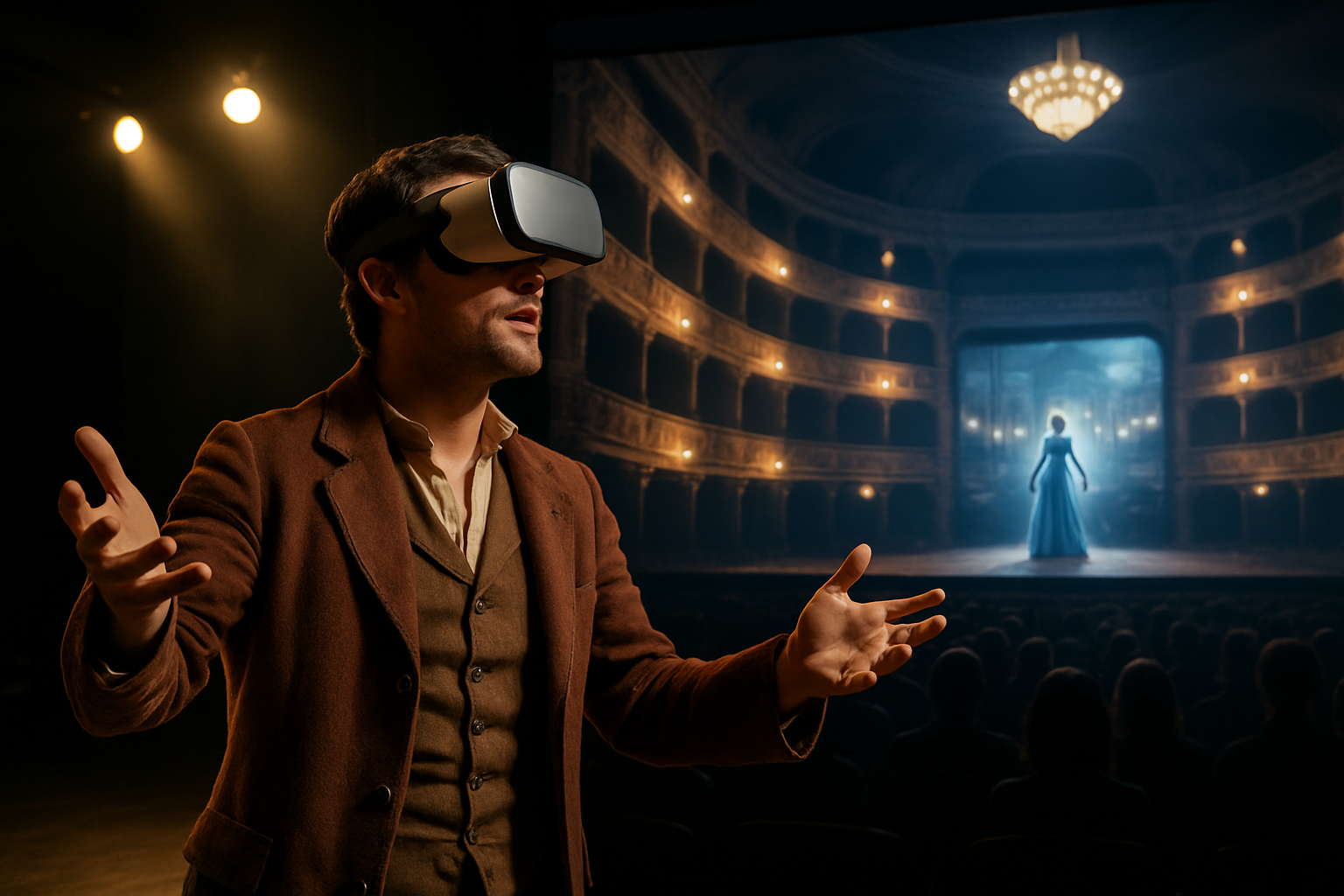Virtual Reality Opera: A New Frontier in Musical Performance
In the ever-evolving landscape of artistic expression, a groundbreaking fusion of technology and classical music is emerging. Virtual Reality (VR) opera, a cutting-edge art form, is reimagining the boundaries of musical performance and audience engagement. This innovative approach melds centuries-old operatic traditions with state-of-the-art virtual reality technology, creating immersive experiences that transport viewers into fantastical realms of sight and sound. As this nascent genre gains traction, it promises to revolutionize not only how we consume opera but also how we conceive of musical storytelling in the digital age.

Breaking the Fourth Wall
One of the most significant aspects of VR opera is its ability to dissolve the traditional barriers between performers and audience. In a conventional opera house, viewers are confined to their seats, observing the action from a fixed perspective. VR opera, by contrast, allows participants to move freely within the virtual space, choosing their vantage point and even interacting with elements of the set or characters.
Expanding Creative Possibilities
For composers and librettists, VR opera opens up unprecedented creative avenues. No longer constrained by the physical limitations of a stage, creators can craft narratives that unfold across impossible landscapes or multiple dimensions. Audiences might find themselves floating through a cosmic void as celestial beings sing arias, or shrunk to microscopic size to explore the inner workings of the human body through song.
Technical Challenges and Innovations
Producing a VR opera presents unique technical challenges. Synchronizing live vocal performances with pre-rendered virtual environments requires precise timing and sophisticated software. Some companies have experimented with motion capture technology to create real-time avatars of singers, allowing for a more dynamic and responsive virtual performance.
The Future of Opera Appreciation
As VR technology becomes more accessible and affordable, virtual reality opera has the potential to democratize access to this historically elite art form. Viewers from around the world could potentially experience world-class performances from the comfort of their homes, wearing nothing more than a VR headset. This accessibility could help cultivate a new generation of opera enthusiasts, breathing fresh life into a genre that has sometimes struggled to attract younger audiences.
Critical Reception and Artistic Debates
The emergence of VR opera has sparked intense debate within the classical music community. Traditionalists argue that the technology detracts from the purity of the vocal performance, while proponents contend that it represents a natural evolution of the art form. Critics have praised the immersive nature of VR opera, noting its ability to create emotionally resonant experiences that rival or even surpass those of traditional productions.
Educational Applications
Beyond its artistic merits, VR opera shows promise as an educational tool. Music schools and conservatories are beginning to explore ways to use the technology to train the next generation of opera singers and directors. Virtual staging allows students to practice performing in a variety of environments without the need for costly physical sets.
Cross-Pollination with Other Art Forms
The techniques developed for VR opera are beginning to influence other artistic disciplines. Dance companies, for instance, are experimenting with virtual reality to create immersive ballet experiences. This cross-pollination of ideas is fostering a new era of interdisciplinary collaboration in the performing arts.
Conclusion: A New Chapter in Operatic History
As virtual reality opera continues to evolve, it stands poised to write a new chapter in the centuries-long history of this venerable art form. By embracing cutting-edge technology while honoring the core elements of operatic tradition, VR opera offers a tantalizing glimpse into the future of musical performance. Whether it will ultimately supplant traditional opera or simply coexist as a complementary medium remains to be seen. What is clear, however, is that this innovative fusion of art and technology is pushing the boundaries of creative expression and audience engagement in ways that were once thought impossible.





